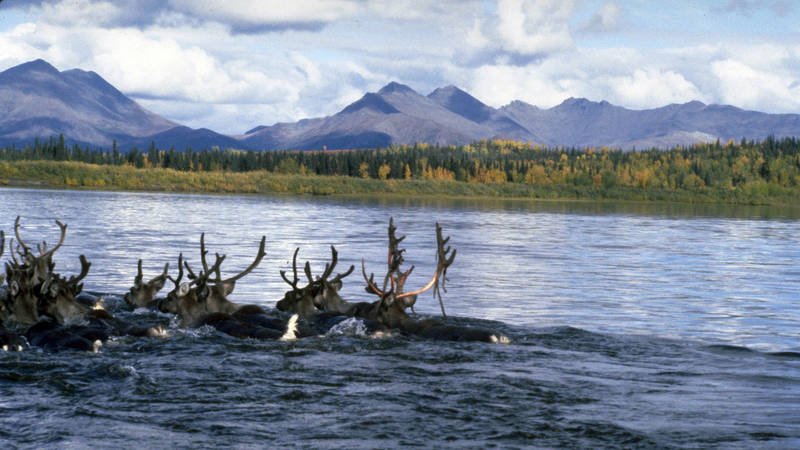The 200+ mile mining road threatens one of the largest remaining Arctic caribou herds and Gates of the Arctic National Park and Preserve.
WASHINGTON – The Bureau of Land Management (BLM) released a draft Environmental Impact Statement (EIS) on the more than 200-mile-long Ambler mining road proposal, which directly threatens one of the largest remaining Arctic caribou herds and Gates of the Arctic National Park and Preserve. The National Parks Conservation Association (NPCA) has long fought the proposal alongside local Alaskans, who refer to Ambler as the “Road to Ruin.”
NPCA and many other local, regional, and national partners support the “no road” option included in the BLM analysis. Ambler road would cross vast roadless tundra in the southern Brooks Range, cut across the country’s second largest national park and disrupt the eastern third of the Western Arctic caribou herd’s migration corridor. The sole goal of the road is to provide private industrial access to a proposed mining district surrounded on three sides by the largest contiguous acreage of parklands in the entire National Park System.

Protecting an Amazing Migration
A proposed mining road would cut through national park land critical to one of the longest land migrations on Earth and harm communities that depend on Arctic caribou for…
See more ›“The costs far outweigh the benefits of building this road, which would bisect Gates of the Arctic National Preserve and disrupt one of the world’s most remarkable intact wildlife migrations, to pave the way for an industrial mining complex,” said Alex Johnson, Alaska program manager for the National Parks Conservation Association. “Our nation’s conservation legacy is at stake with the BLM’s willingness to push forward with this mining road, which will forever alter one of the wildest landscapes on Earth. We stand with local communities and Alaska Natives who oppose this development. All who care for the future of Alaskan wildlife and wild lands must speak up and urge the BLM to reject this billion-dollar driveway.”
Each year, 250,000 Western Arctic caribou migrate across the wild landscape, covering 2,700 miles a year on one of the Earth’s longest land migrations – the distance from Seattle to New York. Recent studies indicate that roads directly impact the animals’ migration behavior, and the Ambler road could significantly shift the herd away from Alaska Native villages that depend on the caribou to feed their households. While industrial development has been a leading factor in dramatic population declines across other North American Arctic caribou, the Western Arctic herd is currently on the rise. The Western Arctic herd alone accounts for 12 percent of all Arctic caribou remaining in North America.
The National Park Service is conducting a separate limited review, as required by the Alaska National Interest and Lands Conservation Act (ANILCA) which mandates that the agency permit a mining access road across Gates of the Arctic National Preserve. The US Army Corps of Engineers will be conducting additional analysis as required by the Clean Water Act.
NPCA is working alongside Alaska communities as well as a broad range of advocates and explorers in fighting this proposal. Learn more at www.npca.org/ambler
# # #
About the National Parks Conservation Association: For 100 years, the nonpartisan National Parks Conservation Association has been the leading voice in safeguarding our national parks. NPCA and its more than 1.3 million members and supporters work together to protect and preserve our nation’s most iconic and inspirational places for future generations. For more information, visit www.npca.org/100.
For Media Inquiries
-
General
-
- NPCA Region:
- Alaska
-
Issues


